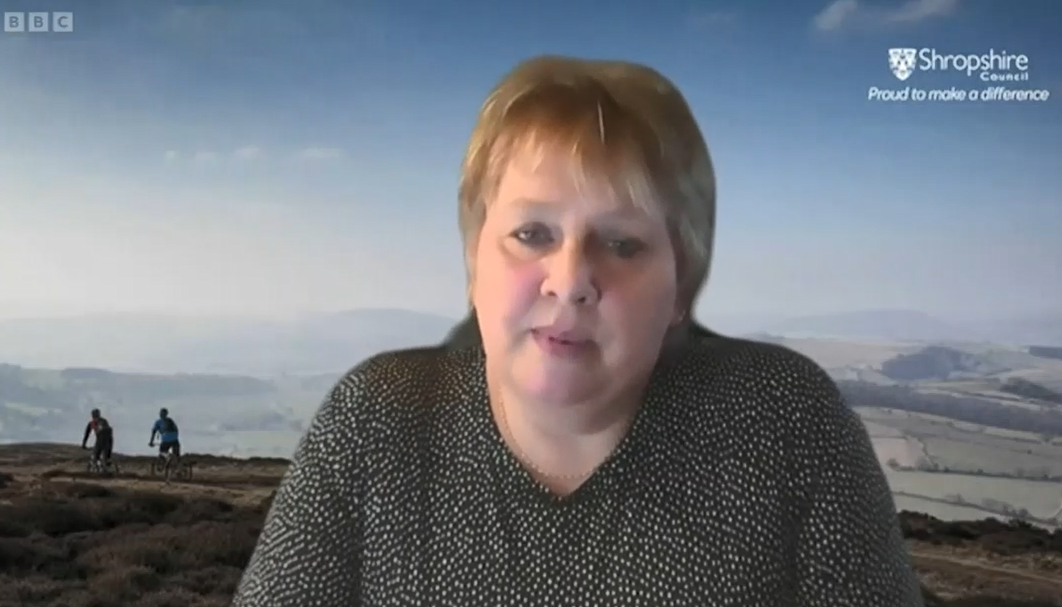Shropshire Council has been controlled by the Conservatives since its inception in 2009. On Sunday, its current leader, its fourth, was interviewed by Elizabeth Glinka on BBC Midlands Politics about the 5% rise in council tax from April (video below). The interview was remarkable in three respects.
Council leader Lezley Picton said that previous council leaders had failed to raise council tax leading to the position it faces now where the council’s budget is not adequate to meet its needs.
The government had failed to recognise the costs that rural areas face and are not giving counties like Shropshire adequate funding.
She also admitted the council reserves are low: “Our reserves are practically gone”.
But her plans for a more than £50m in cuts and pumping nearly £20 million in reserves over the next year are fantasy.
Council Picton said that funding was unfairly distributed, with rural areas losing out. The Fairer Funding Review which was meant to rebalance budgets was promised by the Conservative government in 2016. We are still waiting for the review to report eight years later.
The Conservative government’s inaction on dealing with the escalating costs of social care for adults and children is even worse. Economist Andrew Dilnot published a widely acclaimed report into adult social care in 2011 that called for reforms. Almost every prime minister since has promised to reform social care. Nothing has happened and now Rishi Sunak isn’t even talking about social care reform.
Flexible general reserves at Shropshire Council are now at a critical low point.
In the last ten years, Shropshire Council has taken £19.5m out of its general reserves and only put less than £7m back in. Reserves are not being used for emergencies but to bail out the council’s finances day-to-day.
Auditors say the council should hold between £13m and £26m in the bank to cover emergencies and unanticipated costs, but it now only holds £5.6m. To redress this, the council’s plan is to top up reserves by £19.7m next year. That’s frankly a fantasy. Where is the money going to come from?
Shropshire Council’s answer is that it is planning to save £50.6m from the services it provides the next year. That means a saving £19.1m from people oriented services, including adult and children’s social care where costs are inexorably increasing. A further £13.5m will need to be saved from roads, infrastructure and planning. Cuts to “council wide” and other services must add up to £18.0m. The council has never achieved its planned cuts and this round looks spectacularly unachievable.
Part of the problem is, as Lezley Picton acknowledged, is that the council has not raised council tax as much as it needed to. In the first five years of the council, council tax did not rise. This was in part encouraged by the government which gave the council the equivalent of 1% income if it held council tax at 0%. But the council could have raised council tax between 2% and 5% annually. If it had raised council taxes to the maximum allowed, the Band D charge would now be £1,798.28 instead of £1,639.01, raising an extra £18.8m. That’s not enough to plug the funding gap but it certainly would have helped. Some of the money could have been been used to pay for extra council tax support, which the council cut back from a maximum of 100% to 80% in 2018.
No one wants to pay more tax. But instead of allowing council tax to rise gradually, it will now have to go up in leaps and bounds because of populist anti-tax policies that obsessed Picton’s predecessors.
Where does this dismal picture leave the council?
Shropshire Council is not yet in the position where the chief finance officer will need to consider issuing a Section 114 notice. That would mean that the council is close to going bankrupt. There would be a ban on all discretionary spending, though bins will still be emptied and social care will still be funded. The government might put the council in special measures, sending in commissioners to take over running of the council. Section 114 notices are being issued more frequently. Northamptonshire, Thurrock, Slough and Croydon are just some of the recent councils that have to recently resort to S114.
The problems Shropshire Council is now facing in balancing its budget are not down to its financial team. Neither are external factors to blame. Financial reserves exist to enable a council to survive shocks but they have been raided to pay for day to day costs.
Council leaders have not managed its budget prudently. They have not raised the money it needs to meet its statutory obligations and the expectations of council tax payers.
Notes
Thanks to Councillor Rob Wilson for doing some of analysis used in this article.





Hi Andy
total council assets £905 m total long term liabilities £905 m , ok that includes pensions in the long term borrowing , but every penny of the value of the assets is owed in money. Real world to council, try projecting you incomes and see how they fare before ponying up another 3 or 4 hundred million of “development” vanity schemes, their record is shocking as it is.
What’s your take on this ?